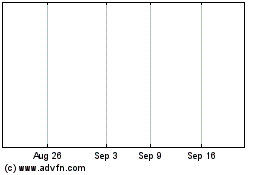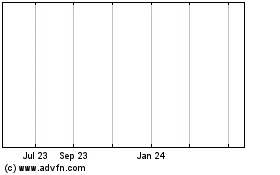US Judge Approves Canada ABCP Plan, Closes Door on Litigation
January 06 2010 - 5:43PM
Dow Jones News
A U.S. bankruptcy court judge approved an application Tuesday,
seeking to make the controversial Canadian restructuring plan of
C$32 billion in toxic asset-backed commercial paper enforceable in
the U.S.
Ernst & Young, which was appointed monitor by an Ontario
court in March, petitioned the U.S. Bankruptcy Court for the
southern district of New York to import, in its entirety, the
restructuring plan under chapter 15 of the U.S. bankruptcy code.
U.S. Judge Martin Glenn approved the decision, Ken Coleman of Allen
& Overy LLP told Dow Jones. Allen & Overy represents Ernst
& Young.
"It closes the door now to any litigation either in Canada or in
the U.S.," says Diane Urquhart, an independent financial
analyst.
The plan of arrangement, as proposed by Pan-Canadian Investors
Committee under the provisions of the Companies' Creditors
Arrangement Act, was approved by an Ontario court in June. CCAA is,
in essence, the equivalent to U.S. Chapter 11 bankruptcy
protection.
As part of the plan, which was hammered out by lawyer Purdy
Crawford, the major players and promoters in Canada's ABCP market
-- from the banks to the brokers and credit-rating agencies, as
well as the Crawford committee -- received releases that protect
them from lawsuits.
The firms that sold the paper to both Canadian- and
U.S.-affiliated investors include: Deutsche Bank (DB), Merrill
Lynch (MER.XX), HSBC Bank (HSB.PR.A-T), UBS AG (UBS), Citigroup
(C), Swiss Re (SWCEY), Wachovia (WB) and Bank of America (BAC).
-By Caroline Van Hasselt, Dow Jones Newswires; 416-306-2023;
caroline.vanhasselt@dowjones.com
ML (NYSE:MER)
Historical Stock Chart
From Mar 2024 to Apr 2024

ML (NYSE:MER)
Historical Stock Chart
From Apr 2023 to Apr 2024
